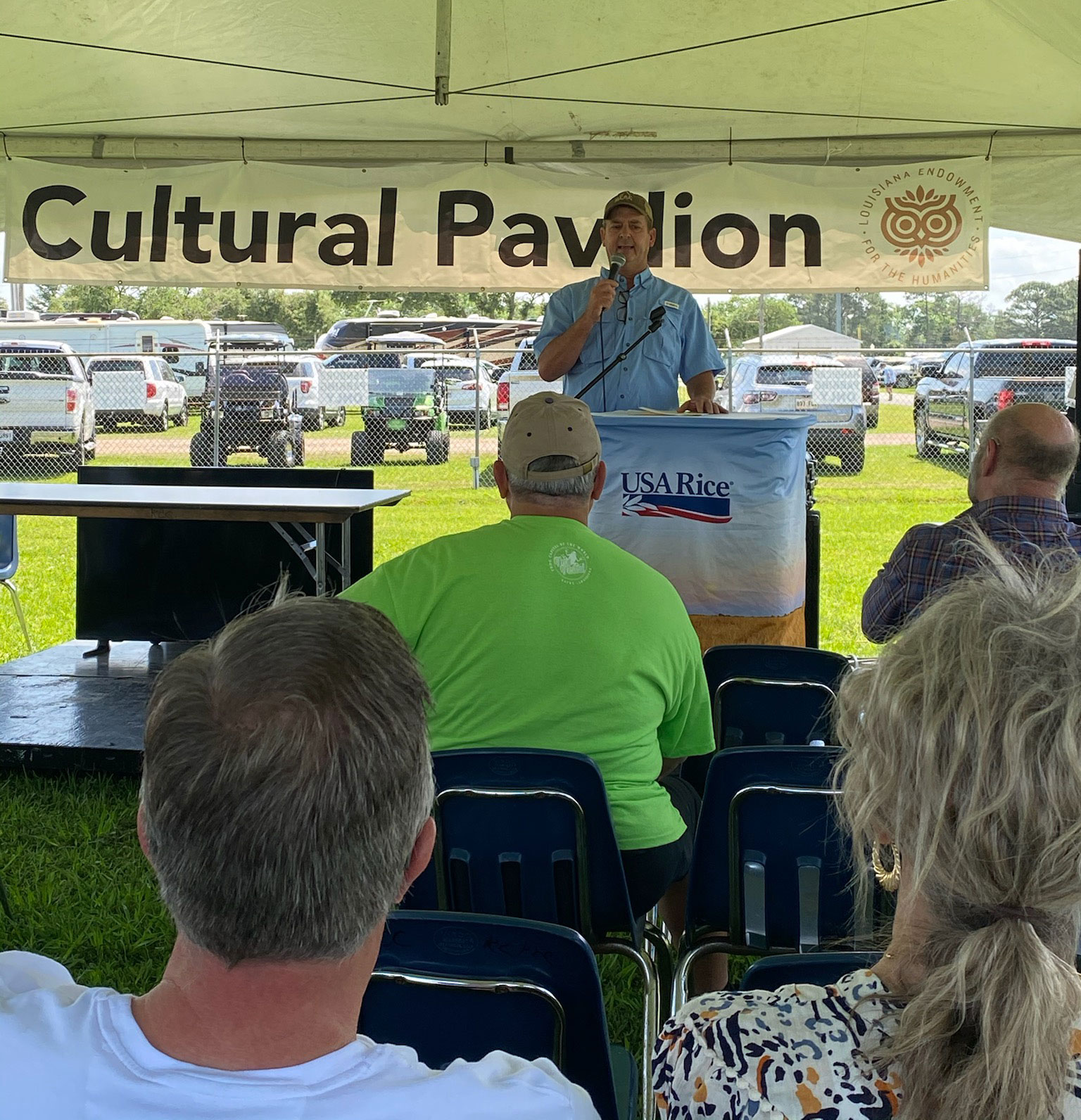 Paul Zaunbrecher shares his family's rich rice history
Paul Zaunbrecher shares his family's rich rice history
May 15, 2023
RAYNE, LA – This past weekend, at the 51st Rayne Frog Festival here, the theme was “Living off the Land.” Among the presentations on a variety of agricultural products and industries, was one on the history of rice production given by Paul Zaunbrecher, a fifth-generation rice farmer from here who farms with his brothers at GF&P Zaunbrecher Farms.
Paul shared the history of his family and the impact of the rice and crawfish industry over the generations since 1881.
Nicolas Zaunbrecher, Paul’s great, great grandfather came to this region and settled in a small village north of Rayne and Crowley, known as Robert’s Cove. After a less than successful year with cotton and corn, he rode horseback around the area to find suitable ground for rice production. Up until that time, commercial rice production in the region did not exist; the only rice in the region was providence rice, grown in low lying areas.
After purchasing land north of Crowley, in the Mowatta area, Nicolas constructed the first manmade reservoir to hold rainwater for flooding the crop throughout the growing season. He was also the first grower from this region to load rice onto the train in Crowley, to be shipped to New Orleans, the site of the nearest rice mill until one was built in Rayne in 1888.
Nicolas was a true pioneer in the rice industry of south Louisiana, finding ways to deal with all the challenges of early production, from reliable water and introducing levees for flood control, to building a bridge to cross the Plaquemine Bayou to make delivery from the fields easier, to using a binder and steam-powered thresher.
Paul explained the many advancements made in the industry since his great, great grandfather’s day, from mechanized equipment to research and technology developments that have made rice production prevalent in south Louisiana. That long list includes the introduction of crawfish rotation as a valuable part of grower operations in the region.
“While I got to share a little about my family’s history, this event is also a great way to tell our industry’s story and promote the value we bring to our communities, the state, and the U.S.,” said Paul. “Nobody tells our story better than we do, and it’s more important these days to make sure it’s shared.”